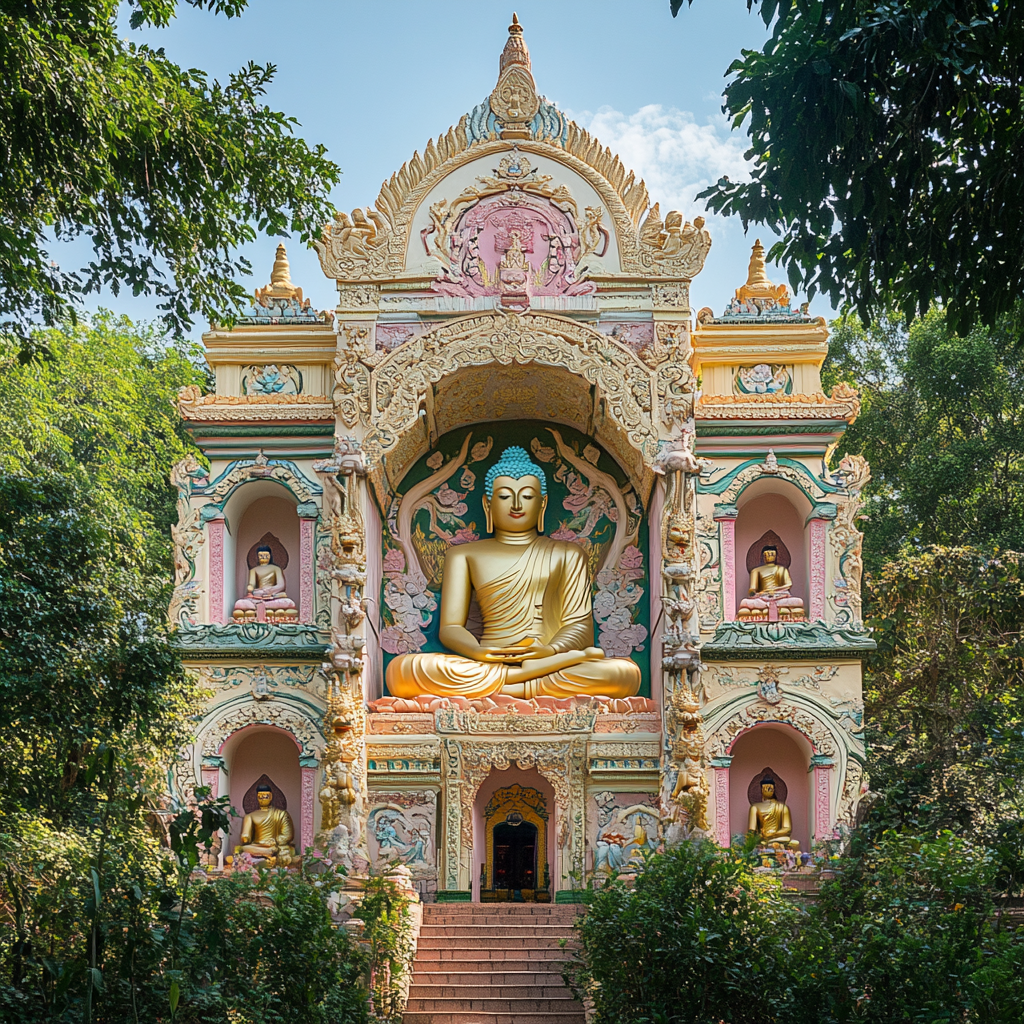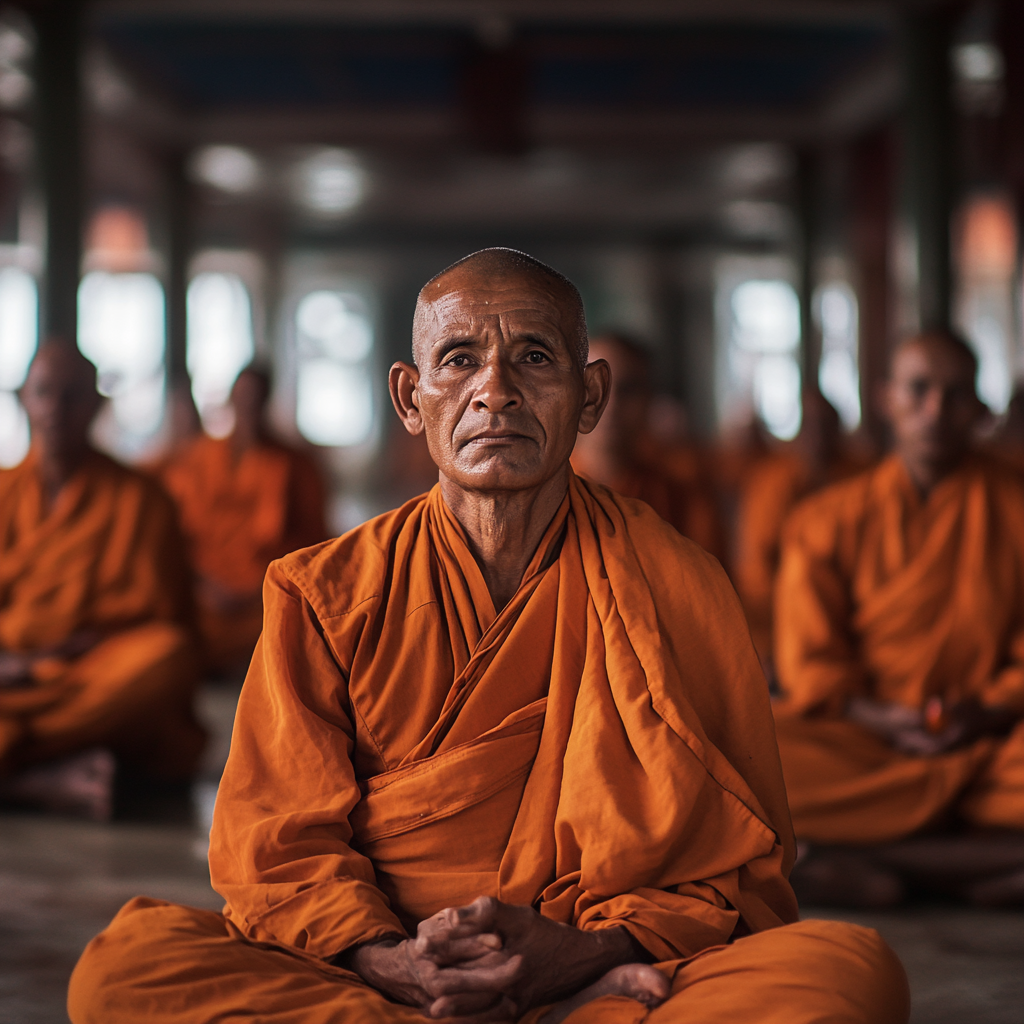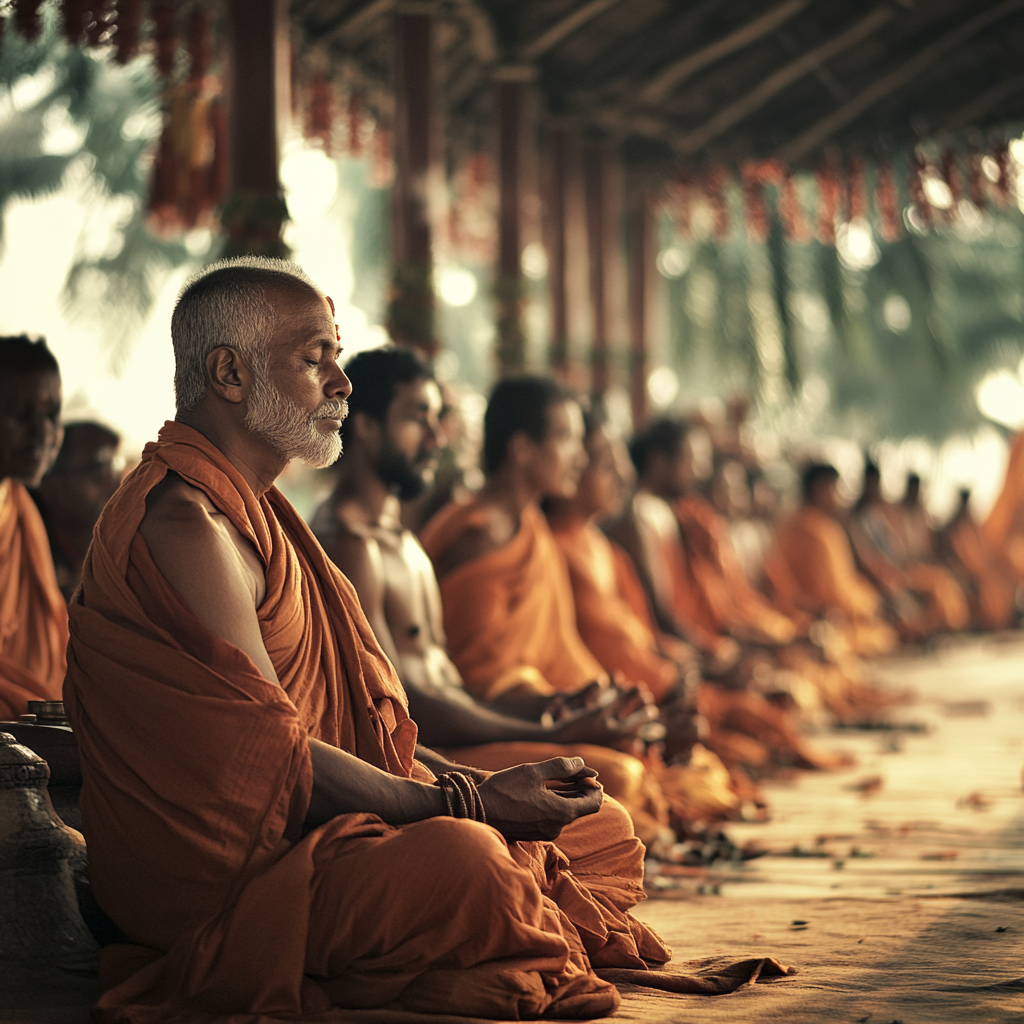A Spiritual Journey
The Temples and Sacred Sites of Cox’s Bazar
Cox’s Bazar is not only famous for its scenic beaches and stunning natural beauty but also for its rich cultural heritage, deeply intertwined with the spiritual life of the local population.
Nestled amidst the coastal landscapes are various temples and sacred sites that serve as a testament to the area’s religious diversity and cultural depth.

One of the most prominent spiritual sites in Cox’s Bazar is the cluster of Buddhist temples in Ramu, a town located approximately 16 kilometers from Cox’s Bazar city. Ramu is home to several monasteries and pagodas, showcasing a rich tapestry of Buddhist traditions.
The Ramu Temple Complex, also known as Ramu Buddhist Monastery, is particularly famous for its large statue of Lord Buddha, which is said to be one of the largest in Bangladesh.
The Ancient Adinath Temple on Maheshkhali Island
Cox’s Bazar is also home to the Rakhine community, an ethnic group with deep cultural and spiritual roots. The Rakhine people practice Theravada Buddhism, and their temples and monasteries play a significant role in preserving their religious traditions.
The Rakhine temples are smaller compared to the Ramu complex but are equally significant in terms of cultural value. These temples are often built in secluded areas, surrounded by nature, which enhances the meditative experience.
Visitors are welcome to explore these peaceful sites, where they can observe monks performing their daily rituals and learn more about the Rakhine way of life. The presence of the Rakhine community adds another layer of diversity to Cox’s Bazar’s spiritual landscape, reflecting the region’s inclusive cultural fabric.
Aggameda Khyang: A Place of Meditation and Learning
Aggameda Khyang is another notable Buddhist temple located near the heart of Cox’s Bazar. This temple is not just a place of worship but also a center for education and community gatherings.
Aggameda Khyang is distinguished by its wooden architecture, with elaborate carvings and a prayer hall that can accommodate a large number of monks and devotees.


Aggameda Khyang is another notable Buddhist temple located near the heart of Cox’s Bazar. This temple is not just a place of worship but also a center for education and community gatherings.
Aggameda Khyang is distinguished by its wooden architecture, with elaborate carvings and a prayer hall that can accommodate a large number of monks and devotees.
The Influence of Spiritual Tourism on Local Communities
The spiritual sites in Cox’s Bazar are not only of religious importance but also play a crucial role in the local economy through spiritual tourism.
Pilgrims and tourists visiting these sacred places contribute to the livelihoods of the local communities by supporting small businesses, such as local guides, artisans, and vendors selling traditional handicrafts and religious items.
However, it is important for visitors to approach these sacred sites with respect, understanding the cultural and spiritual significance they hold for the local people. Responsible tourism can ensure that these places remain preserved for future generations while continuing to provide economic benefits to the community.
Local authorities and religious leaders are increasingly working together to balance tourism with the preservation of cultural heritage, ensuring that the impact on these sites remains positive.
Experiencing the Spiritual Diversity of Cox’s Bazar
The beauty of Cox’s Bazar lies not only in its natural attractions but also in its diverse cultural and spiritual heritage.
Whether it is the grandeur of the Buddhist temples, the devotion seen at the Hindu Adinath Temple, or the peaceful rituals of the Rakhine community, the spiritual journey through Cox’s Bazar is rich and multifaceted.
This diversity is a reflection of Bangladesh’s broader cultural fabric, where multiple faiths coexist and contribute to the nation’s identity.

For travelers seeking a deeper connection with the places they visit, exploring the temples and sacred sites of Cox’s Bazar offers an experience that goes beyond sightseeing. It is an invitation to understand the values, beliefs, and traditions that shape the lives of the local people.
Conclusion
Cox’s Bazar offers more than just its natural beauty; it is a destination where one can explore a rich spiritual heritage that speaks to the heart and soul. From the serene Buddhist monasteries of Ramu to the hilltop Adinath Temple on Maheshkhali Island, each site provides a unique glimpse into the cultural and religious diversity of the region.
For those interested in learning more, consulting professional guides or experts in cultural tourism can help enhance the experience, providing deeper insights into the history and significance of these spiritual landmarks. Embrace the opportunity to explore Cox’s Bazar not just as a beach destination, but as a place where the spirit is nurtured and the mind is enlightened.
